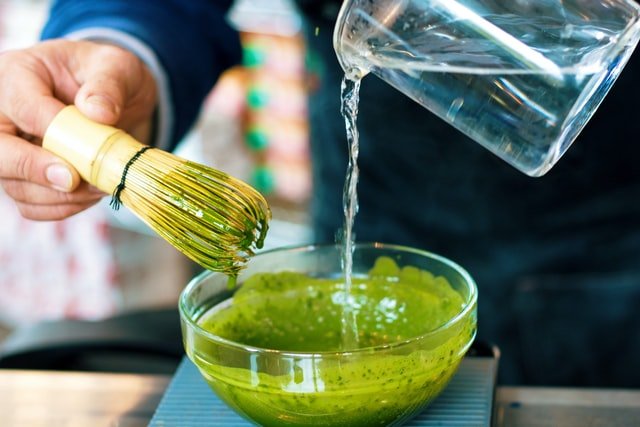
China is famous for its tea, mainly for its green tea, although it produces and exports different varieties that include black tea, yellow tea, pu-erh, white tea and oolong, among others.
Today we have set out to present you with a guide to enter the world of the best Chinese green tea without getting lost. But how? Are there so many different varieties of green tea? Of course, although it seems hard to believe for those who are new to the world of tea, and yes, the differences are palpable.
What is green tea?
This infusion is a kind of slightly oxidized tea. Green tea is made from the leaves of the tea plant, Camellia sinensis, but unlike black tea, it does not undergo an oxidation process. On the contrary, the oxidation it receives is minimal. As you read, two very different varieties of tea are prepared with the same leaves and what modifies their flavor, color and aroma is their processing.
Particularly in China, tea leaves undergo a drying process quickly after harvesting; that is to say that the natural oxidation process that takes place is very little, only a few hours.
The leaves are then cooked in huge woks over open fires. This treatment, which differs from the typical Japanese steam cooking, gives Chinese green tea a unique roasted flavor.
After this cooking, the leaves are rolled up and dried to preserve the maximum possible amount of their essential oils, flavour, color and aroma. It is worth noting that green tea offers a large number of beneficial properties for health due to its short oxidation process.
Where is Chinese green tea produced?
The reality is that green tea production in China is widespread. Therefore, it is possible to find tea crops throughout the country.
In the province of Zhejiang, in eastern China, different varieties of green tea are produced, among which Xi Hu Longjing or Dragon’s Well stands out; while in the province of Jiangsu, other typologies are made and even a Longjing forgery. Curious, right?
Also the provinces of Hubei, Henan, Anhui and Jiangxi are owners of green teas with their denomination of origin. In the next section, we will talk about each of the Chinese green teas.
Compilation of the best Chinese green teas

Choosing a Chinese green tea is not easy as they all have a great reputation. However, here we propose a list of essential teas that you will be interested in knowing.
Xi Hu Longjin
We start the ranking of the best Chinese green tea with perhaps the most famous variety: Dragon’s Well, a soft tea that is sold at very high prices due to its high quality. This tea with a purely vegetable flavor stands out for its minimal astringency and its hints of toasted rice and cashew nuts.
Its elaboration is striking. Although it is also cooked in woks, it is stirred with the hands in such a way that the leaves are smoothed until they obtain a totally flat appearance.
As a curiosity, we tell you that according to legend an emperor visited the Hu Gong Temple where he was treated to a bowl of Xi Hu Longjing tea and liked its taste so much that he decided to grant “imperial status” to the tea bushes that grew outside said temple.
As we pointed out earlier, its falsification is quite common, so much so that much of the tea that can be bought does not really belong to this variety. In fact, the most famous of them takes place in the Chinese province of Sichuan.
Anji Bai Cha
The translation would be something like “Anji white tea” although, in reality, it belongs to the family of Chinese green teas. Undoubtedly, in terms of taste and quality, it shares a privileged position on our list along with Dragon’s Well tea and, in fact, is made in the same province.
Its name honors the pale color of the buds used to make it. These appear during the first days of spring and, due to their lack of chlorophyll, they look almost white. Its flavor is sweet and very delicate on the palate.
Mao Jiang
Known as Jade Points, it is made in the Henan province and has a sweet and subtle flavor thanks to the use of young shoots and leaves to make it. The best batch of this tea is made from the buds in early April, before the first monsoon of the season arrives. Due to its low production, it is an exclusive tea.
Taiping Hou Qi
This variety is known as King of the Monkeys. Legend has it that monkeys always attacked the tea crops in Anhui province until one day a little monkey went missing. After hours and hours of searching, his father fell asleep exhausted on a small farm. The owner of it picked him up and cured him. So grateful was the monkey that he assured the farmer that he and his pack would help him pick the tea. Thus, the farmer named him King of the monkeys.
This tea is made in a curious way, since the leaves are placed on a wire mesh to dry. Thus, the long leaves acquire that curious framework. On the palate, this infusion has a pleasant body and a slight bitter touch.
Green tea with jasmine
Traditional from the province of Fujian, this green tea stands out for its shape of small pearls and the delicate aroma of jasmine that it acquires after an aromatizing treatment that lasts overnight and uses large amounts of fresh jasmine. Without a doubt, a tea that surprises the senses.
Huang Shan Mao Feng
This tea is produced in the Yellow Mountain, in Anhui province. The curious thing is that the same plant that gives rise to the famous Keemun black tea, provides the tender shoots to prepare this refreshing and delicate green tea.
Liu An Gua Pian
This green tea has a long history. In fact, the first indications of its existence are from the 8th century. It is said that it was used as tribute during the Qing dynasty.
Liu An Gua Pian is prepared using the open, ripe leaves of Camellia sinensis. These are pressed, roasted and dried. After drying, they receive a treatment on bamboo that curves the leaves. In the cup, it looks yellowish in color and in the mouth, it feels strong, sweet and slightly astringent.
Gunpowder green tea
Famous for its presentation in the form of small balls, this tea has been known since the years 600-700 and stands out for its strong and smoky flavor. This tea is often used, mixed with mint, to make so-called Moorish tea.
And so far our list of Chinese green teas. If we are honest, there are still more varieties. China offers extraordinary wealth to the world of tea. Do you dare to explore it?
